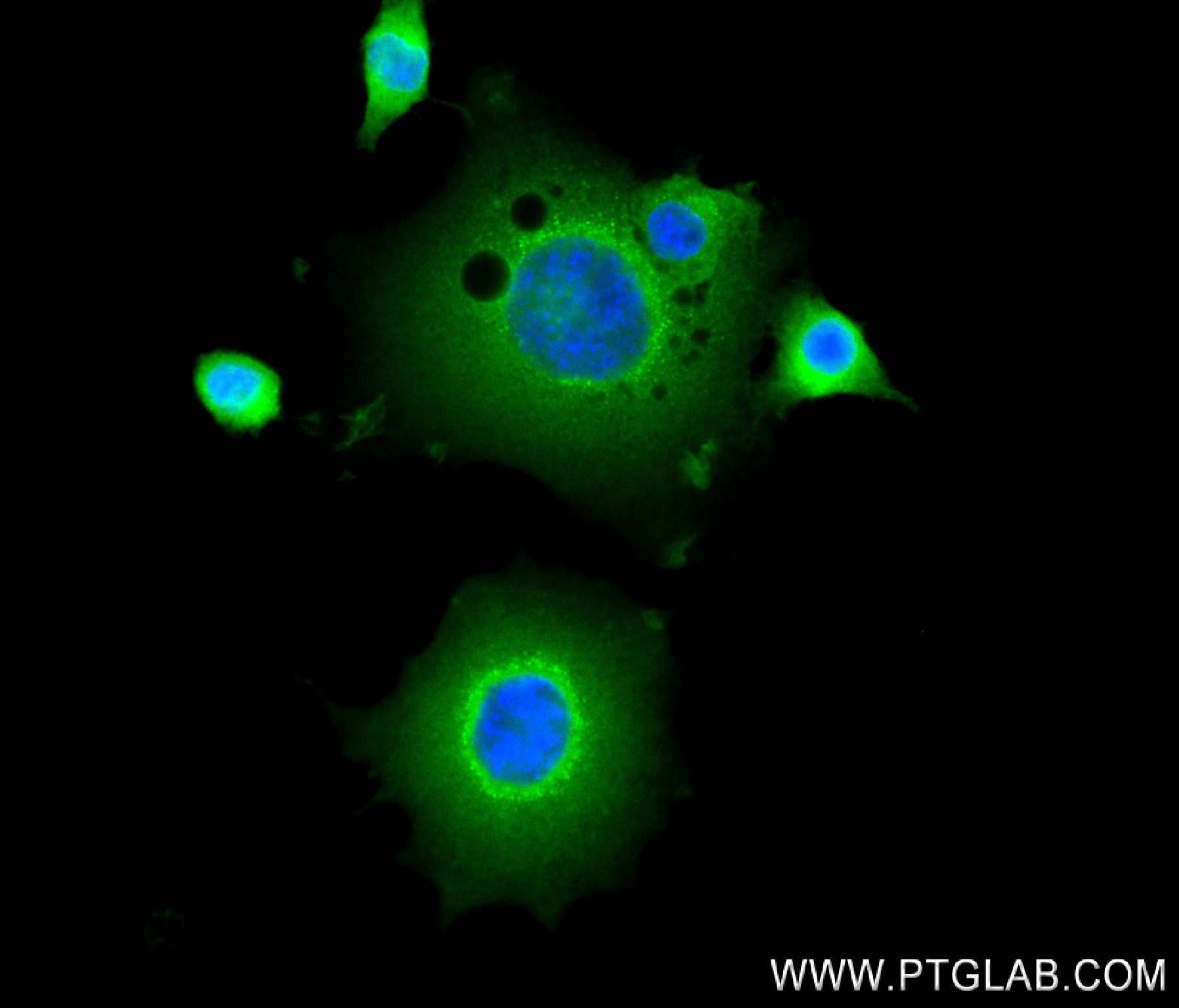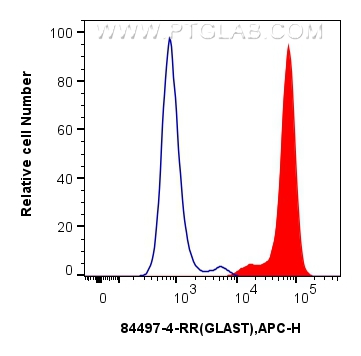验证数据展示
产品信息
84497-4-PBS targets GLAST/EAAT1 in IF/ICC, FC (Intra), Indirect ELISA applications and shows reactivity with human, mouse samples.
| Tested Applications | IF/ICC, FC (Intra), Indirect ELISA Application Description |
| Tested Reactivity | human, mouse |
| Immunogen | GLAST/EAAT1 fusion protein Ag16962 种属同源性预测 |
| Host / Isotype | Rabbit / IgG |
| Class | Recombinant |
| Type | Antibody |
| Full Name | solute carrier family 1 (glial high affinity glutamate transporter), member 3 |
| Synonyms | GLAST, EAAT1, Sodium-dependent glutamate/aspartate transporter 1, SLC1A3, GLAST-1 |
| Calculated Molecular Weight | 542 aa, 60 kDa |
| GenBank Accession Number | BC037310 |
| Gene Symbol | GLAST |
| Gene ID (NCBI) | 6507 |
| Conjugate | Unconjugated |
| Form | Liquid |
| Purification Method | Protein A purfication |
| UNIPROT ID | P43003 |
| Storage Buffer | PBS Only |
| Storage Conditions | Store at -80°C. The product is shipped with ice packs. Upon receipt, store it immediately at -80°C |
背景介绍
SLC1A3, also known as EAAT-1 or GLAST, is a membrane-bound protein localized in glial cells and pre-synaptic glutamatergic nerve endings. It transports the excitatory neurotransmitters L-glutamate and D-aspartate, which is essential for terminating the postsynaptic acction of glutamate. Recently, a correlation between expression/function of glial EAAT-1 and tumor proliferation has been reported. The exceptionally rare expression of EAAT-1 in non-neoplastic choroid plexus (CP) compared to choroid plexus tumors (CPT) may distinguishes neoplastic from normal CP. There are a number of splicing variants of SLC1A3, like GLAST1a and GLAST1b, exist due to the exon skipping. It also undergo glycosylation. Variety of bands can be observed in the western blotting assay: 50-55 kDa represents the unglycosylated GLAST1a or GLAST1b, 65-70 kDa correspond to the glycosylated proteins, larger proteins between 90-130 kDa may be the multimers of SLC1A3. (11086157, 17471058, 12546822)


